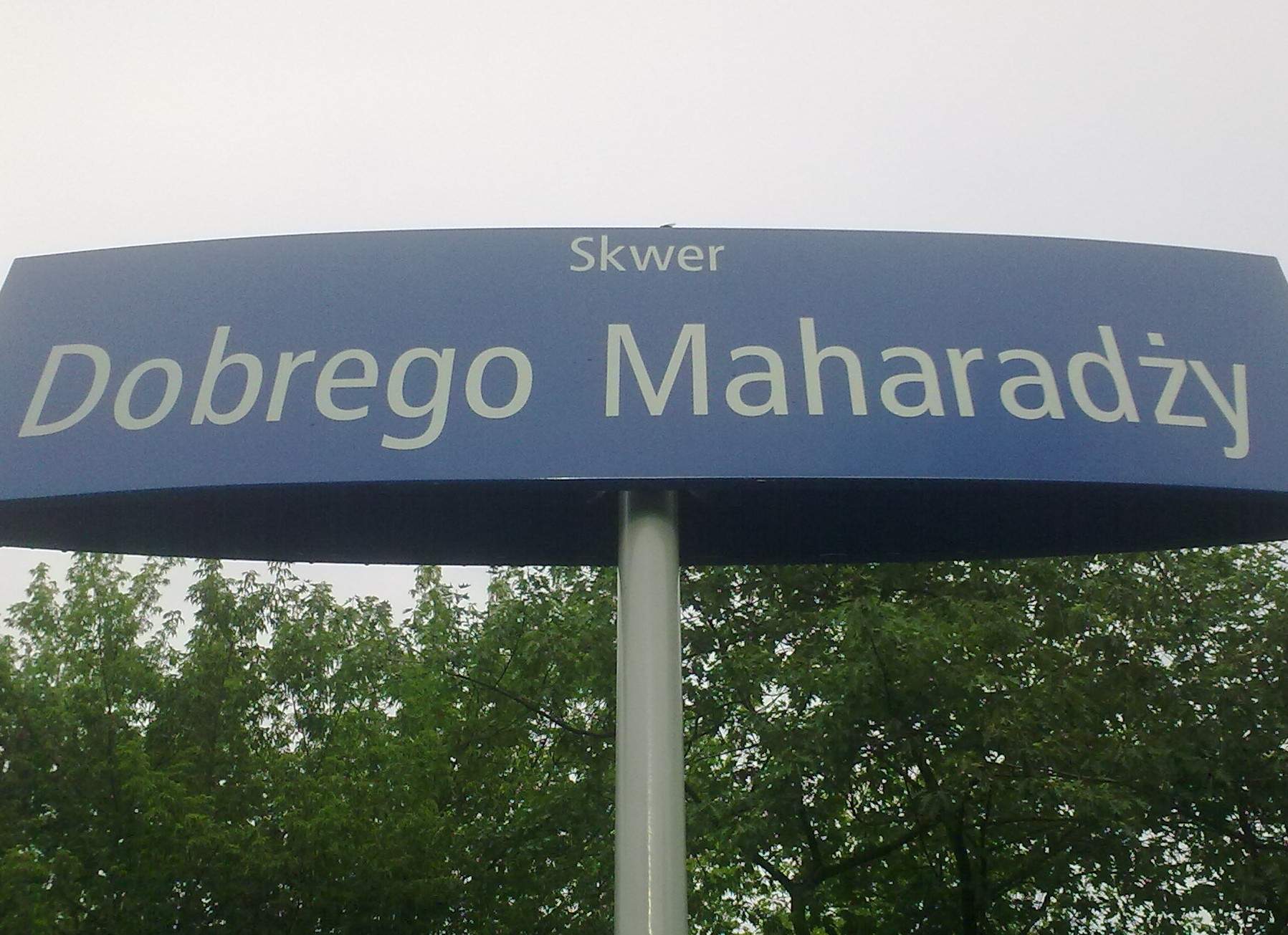
The Maharaja of Nawanagar with orphans: photo - CSPA
The Square of the Good Maharaja (Skwer Dobrego Maharadzy) lies in the Ochota district of central Warsaw, commemorating the late Indian prince who died in 1966.
A resolution was passed by the Warsaw City Council on 31 May in favour of the square being named in the maharaja's honour, following a campaign led by the Poland-Asia Research Center (CSPA).

photo: infochoty.waw.pl
It was decided that the recipient's full name - Jam Sri Digvijaysinhji Ranjitsinhji Jadeja – was too much of a tongue-twister for local residents, hence the less challenging choice of words for the sign.
An accompanying plaque relating how the maharaja came to Poland's aid is currently being prepared by the state-backed Council for the Protection of Struggle and Martyrdom Sites (ROPWiM).
The Munificent Maharaja
The Indian monarch currently honoured in Warsaw was the maharaja of the princely state of Nawanagar.
Although Nawanagar was technically one of the 565 states that were independent from British rule across India, in practice matters were somewhat blurred.
The maharaja of Nawanagar had been educated in England and had served for a time in the British Army, and when war broke out in Europe in 1939, the prince was chosen as a member of Churchill's Imperial War Cabinet.
With Poland divided between Nazi Germany and Soviet Russia, Moscow ordered the deportation of allegedly anti-Soviet elements to far-flung reaches of the empire to perform forced labour.
The families of the intelligentsia and state employees were among the most at risk of deportation. Soviet documents record that over 330,000 were deported, while wartime Polish sources claimed over a million.
However, when Hitler turned on his Russian ally, launching Operation Barbarossa in June 1941, Stalin was compelled to make an alliance with Great Britain and Poland - the Polish government-in-exile was in London at this time.
Stalin announced an amnesty for his Polish prisoners, and the enormous task of attempting to transport the scattered captives out of the Soviet Union was set in motion.
General Wladyslaw Anders, himself freshly released from captivity, began forming a prospective army of Polish soldiers from the deportees.
The Maharaja of Nawanagar became a rallying figure in solving the plight of the many children and women caught up in the conflict.
He volunteered to house orphans on his land, aided by the Polish-government-in-exile, and premises were prepared by his summer palace at Balachadi, on the coast of Nawanagar.
A school was run there by delegates of the Polish-government-in-exile, and over 500 orphans passed through between 1942 and November 1946.
The children warmed to the imposing figure of the maharaja, calling him 'Bapu' (Father in Hindi).
As it was, most of the Polish deportees who had managed to get out of the Soviet Union with General Anders did not return to their homeland after the war, owing to the installation of a communist regime in their country.
However, a considerable number of the orphans did resettle in Poland.
Nevertheless, the deportations to Siberia, which had been carried out by the Soviets, were a taboo subject in communist Poland.
For this reason, the maharaja's deeds were not promoted after 1945, until the fall of the Iron Curtain in 1989 changed the status quo. (nh)